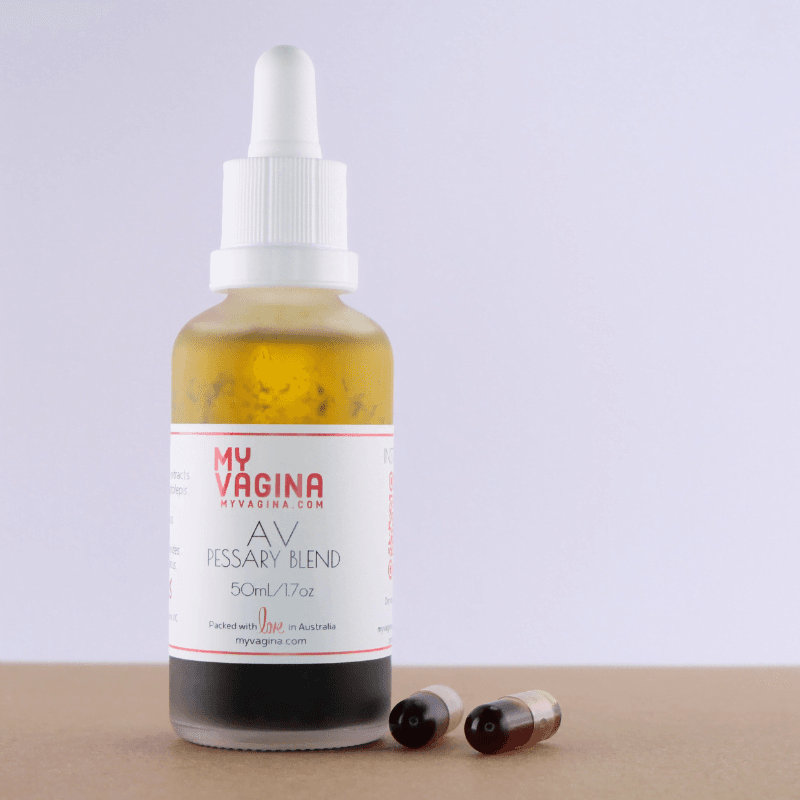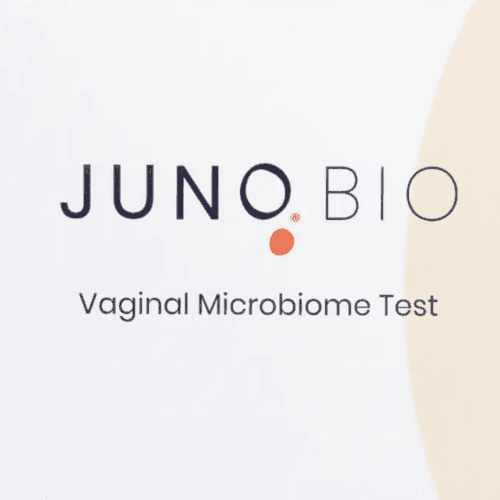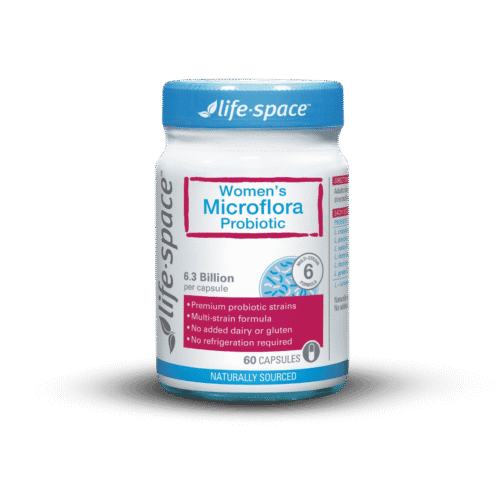The ingredients in the AV Vaginal Pessary and penis treatment have been chosen very carefully based on their impact on typical aerobic vaginitis (AV)-related bacteria, biofilms, and the mucosal surfaces.
AV Vaginal Pessary ingredients:
- Sweet almond oil base
- Sida (Sida acuta) herbal extract
- Cryptolepis (Cryptolepis sanguinolenta) herbal extract
- Mullein (Verbascum thapsus) herbal extract
- Green tea (Camellia sinensis) herbal extract
- Perilla (Perilla frutescens) herbal extract
- Liquorice (Glycyrrhiza glabra) herbal extract
- Sea buckthorn oil (Hippophae rhamnoides)
- EDTA (ethylenediaminetetraacetic acid)
- Sunflower lecithin
- Contains alcohol and glycerine
Typical AV-related bacteria include:
- Enterococcus
- Escherichia coli (E. coli)
- Streptococcus
- Group B Streptococcus
- Staphylococcus
- Klebsiella
About the ingredients in the AV treatment
Sweet almond oil base
- Small fat molecules allow gentle penetration of active constituents in herbal medicine into superficial layers of the vaginal mucosa without irritation
- High in oleic acid and linoleic acid (fatty acids protect and moisturise sensitive skin, including the vaginal epithelium)
- Emollient properties (help maintain tissue elasticity and reduce irritation and dryness)
- Low irritant and allergenic potential
- Good lipophilic delivery of active constituents (helps keep herbal ingredients close to the mucosa for longer so they can exert their therapeutic effect)
- Rich in antioxidants and vitamin E (soothing to inflamed or irritated tissue, helps reduce redness and supports healing)
- Supports tissue repair by enhancing skin barrier function and modulating local inflammation
- Often recommended for perineal massage to increase elasticity and reduce the risk of tears during childbirth
- Often used as a lubricant because it is mild, non-irritating and moisturising, particularly for postmenopausal dryness
- Stability due to balanced fatty acid profile (doesn’t oxidise as readily as some other oils)
- Blends well with other ingredients
About Sida acuta for treating AV
Sida acuta is a potent antimicrobial, particularly effective against AV-specific gram-positive bacteria (Enterococcus, Streptococcus and Staphylococcus, particularly S. aureus), though still effective at higher doses against gram-negative bacteria (E. coli)1.
About Cryptolepis sanguinolenta for treating AV
Cryptolepis is used to treat infections caused by AV-related bacteria, including Streptococcus, Staphylococcus, MRSA, Klebsiella and E. coli. Cryptolepis can also treat Candida.
In research, cryptolepis was more effective as an antimicrobial against over 100 species of Campylobacter bacteria than co-trimoxazole and sulfamethoxazole, and equally as effective as ampicillin2.
About mullein (Verbascum thapsus) for treating AV
Mullein is very soothing to mucous membranes3, including the vaginal mucosa, due to its mucilaginous actions. Herbs that are mucilaginous create a supportive barrier over mucosal surfaces, protecting them and allowing them to heal.
Mullein is also antibacterial, known to be effective against AV-related bacteria, including Klebsiella pneumoniae, Staphylococcus aureus, Staphylococcus epidermidis and E. coli3,4 and yeast (Candida) species4.
About green tea (Camellia sinensis) for treating AV
High in catechins, particularly EGCG (epigallocatechin-3-gallate), which have antimicrobial properties against a wide range of bacteria, including some resistant strains. EGCG disrupts bacterial cell membranes, inhibits biofilm formation and interferes with microbial enzyme systems.5
EGCG is known to inhibit E. coli, Staphylococcus and Streptococcus5–7.
Green tea is also high in polyphenols (potent antioxidants) that actively reduce mucosal inflammation, which is common in AV.
About ethylenediaminetetraacetic acid (EDTA) for treating AV
EDTA is added to many of My Vagina’s treatments as the biofilm matrix degrading component. EDTA binds to minerals, which are abundant in AV-related (and other) bacterial biofilms, removing them from the matrix and thus collapsing the structure8.
Once the biofilm matrix has collapsed, the hidden bacteria can be impacted by the targeted active ingredients in the herbal blend.
Synergistic ingredients make an effective treatment
My Vagina’s clinical naturopaths carefully choose and combine the ingredients in each and every treatment for maximum effect on disruptive bacteria, lowest possible risk of irritation, and an overall combined effect to treat even the most problematic antibiotic-resistant infections.
References
- 1.Obuotor TM, Kolawole AO, Adeyanju FO, Adewumi SS. Antimicrobial activity of Sida acuta, Phyllanthus amarus and Phyllanthus muellerianus against microorganisms implicated in urinary tract infections. ijs. Published online November 22, 2021:153-168. doi:10.4314/ijs.v23i2.16
- 2.Hlashwayo DF, Barbosa F, Langa S, Sigaúque B, Bila CG. A Systematic Review of In Vitro Activity of Medicinal Plants from Sub‐Saharan Africa against Campylobacter spp. Moss M, ed. Evidence-Based Complementary and Alternative Medicine. Published online January 2020. doi:10.1155/2020/9485364
- 3.Turker AU, Camper ND. Biological activity of common mullein, a medicinal plant. Journal of Ethnopharmacology. Published online October 2002:117-125. doi:10.1016/s0378-8741(02)00186-1
- 4.Dulger G, Dulger B, Tutenocakli T. Antimicrobial potential of the leaves of common mullein (Verbascum thapsus L., Scrophulariaceae) on microorganisms isolated from urinary tract infections. Journal of Medicinal Plants Studies. 2015. https://www.plantsjournal.com/archives/2015/vol3issue2/PartB/3-2-29.1-695.pdf
- 5.Reygaert W, Jusufi I. Green tea as an effective antimicrobial for urinary tract infections caused by Escherichia coli. Front Microbiol. Published online 2013. doi:10.3389/fmicb.2013.00162
- 6.Taylor PW, Hamilton-Miller JMT, Stapleton PD. Antimicrobial properties of green tea catechins. Food Science <html_ent glyph=”@amp;” ascii=”&amp;”/> Technology Bulletin: Functional Foods. Published online November 28, 2005:71-81. doi:10.1616/1476-2137.14184
- 7.Liu S, Zhang Q, Li H, Qiu Z, Yu Y. Comparative Assessment of the Antibacterial Efficacies and Mechanisms of Different Tea Extracts. Foods. Published online February 21, 2022:620. doi:10.3390/foods11040620
- 8.Lin J, Suo J, Bao B, et al. Efficacy of EDTA-NS irrigation in eradicating Staphylococcus aureus biofilm-associated infection. Bone Joint Res. Published online January 11, 2024:40-51. doi:10.1302/2046-3758.131.bjr-2023-0141.r1

Get a fresh perspective with a qualified, experienced vulvovaginal specialist naturopath.
This product has multiple variants. The options may be chosen on the product page
The most comprehensive vaginal microbiome test you can take at home, brought to you by world-leading vaginal microbiome scientists at Juno Bio.

Promote and support a protective vaginal microbiome with tailored probiotic species.







